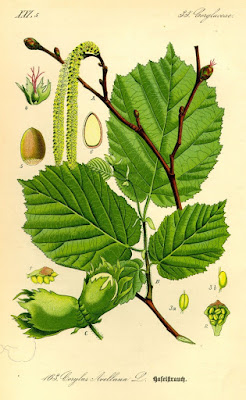Avena fatua field on Samos
Avena fatua (L. 1753) known as the common wild oat, is a species of grass in the oat genus. Avena (feminine noun) is the Spanish word for oat and fatua means delusive, misleading or deceptive. A. fatua looks quite similar to the cultivated oat Avena sativa.
Avena is a genus of plants in the grass family Poaceae and they are collectively known as the oats. They include species like A. sativa which have been cultivated for thousands of years as a food source for humans and livestock. All oats have edible seeds, though they are small and hard to harvest in most species.
Among the oats, the common oat A. sativa is the most cultivated cereal grain of commercial importance. Four other species of Avena are grown as crops of minor or regional importance. The wild ancestor of A. sativa and the closely related minor crop Avena byzantina is the Aavena sterilis which grew in the Fertile Crescent of the Middle East. A. byzantina, a minor crop in Greece and the Middle East is introduced in Spain, Algeria, India, New Zealand, South America, etc.
Top A. sativa growing countries are Russia and Canada.
About 17 species of Avena occur in the wild that are known as wild oats or oat-grasses.
A. fatua is a typical oat in appearance, a green grass with hollow, erect stems 30-120 cm tall bearing inflorescence of panicles (much branched) with pedicelled (stemmed) spikelets (tight masses of grain). However, A. sativa, the cultivated oat, has denser panicles and the florets do not readily separate and shed.
The leaf blades are dark green, up to 1 cm wide and up to 40 cm long and rough due to small hairs, with a membraneous ligule (the thin outgrowth at the junction of leaf and stem) 1-6 mm long and often irregularly toothed sheaths (the leaf base when it forms a vertical coating surrounding the stem) smooth or slightly hairy, especially in younger plants.
As a specific trait of the Avena species, the lemmas (bracts enclosing the grain) have 2 to 3 awns (long bristles) arising from the back that are 3 to 4 cm long. The awn of the A. fatua seed twists into a helix (spiral) on drying and untwists when wet, thereby drilling the seed into the soil.
A cosmopolitan grass species, the wild oat A. fatua has been introduced to most of the temperate regions of the world, especially where cereals are grown. It is believed to have originated in Eurasia and has been associated with the cultivation of oats and other cereals since the early Iron Age. There are two hypotheses about the origin of A. fatua. The first, most widely accepted hypothesis states that A. fatua originated from the cultivated A. sativa, which is derived from A. sterilis. The reverse hypothesis suggests that A. sterilis and A. fatua are ancestors of A. sativa. A. fatua and its subspecies are well adapted to the life cycle and growth of spring cereals, but are also abundant in winter cereals.
Wild oats growing alongside cultivated oats in agricultural fields are considered nuisance weeds competing with crop production. Being grasses like the crop, they are difficult to remove chemically; any standard herbicide that would kill them would also damage the crop. A specific herbicide must be used. The costs of this herbicide and the length of time it must be used to reduce the weed is significant, with seeds able to lie dormant for up to 10 years.
A. fatua is also common in other rotation crops, on pasture, in vineyards and on wasteland. It is especially common in the following crops: wheat, barley, rye, oats, rice, maize, potatoes, oilseed rape, sugar beet, sugarcane, sorghum, cotton, tea, peas, lentils, alfalfa, soy beans, flax and sunflowers.
In the northern hemisphere, A. fatua germinates mainly in spring and to a lesser extent in autumn. It has been reported to germinate over a wide range of temperatures (5-30°C), with optimum germination around 15°C.
Many subspecies of A. fatua requiring different climatic and soil conditions have been identified. Other species of Avena are not as widespread as A. fatua, but they are also troublesome in some countries. The whole species seems to be troublesome wherever cereals are grown in locations with an annual rainfall of 375 to 750 mm. A.fatua grows on nearly all soil types. It forms a large root system with a high uptake of phosphorus and nitrogen. It has an annual life cycle and produces up to 1000 seeds per plant. (http://www.cabi.org/isc/datasheet/8058)


The wild oat A.fatua is one of my familiar weeds that I’m accustomed to seeing frequently everywhere I go. When its dry panicles turn yellow it glows more noticeably in the sun.
As a species we humans have been merciless about the endless demands we make on nature and our indiscriminate use of means to obtain what we want. I dedicate this post to the generous bounty of the astonishing planet Earth that we belong to. May it sustain all life for millions of years to come.
Rolled oats-oat kernels that have been de-husked, steamed and then rolled into flat flakes under heavy rollers before being stabilized (disrupting rancidification and the germ so that it can’t sprout) by being lightly toasted.
And…. I say goodbye to my precious readers, now that I am taking a break from recounting details and memories about my favorite plants to perhaps begin anew at a later date.



























































